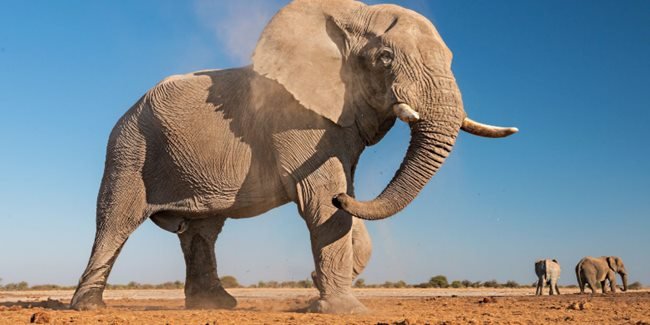7 Astonishing Insights into the World of Elephants
ELEPHANT – Here are seven (7) fascinating facts about elephants. Explore the wonders of the Earth’s gentle giants.
The elephant is renowned for its magnificence in the animal kingdom, particularly the African savanna elephant, the largest living land mammal on Earth, weighing between 4 to 7 tons and standing up to 13 feet tall. Despite their impressive stature, the elephant population faces threats from poaching and the ivory trade, yet many people are passionate about protecting these social animals.
What leads to the rapid evolution of certain elephants? What creature instills them with intense fear?

Here Are 7 Intriguing Facts About Elephants
Elephant Pregnancies Last Almost Two Years
Elephant pregnancies last nearly two years, with African elephants giving birth to a single calf every four to five years, enduring a 22-month gestation period. Asian elephants have a similar gestation period and typically produce one calf every three to eight years. This extended period aids in preparing the calves for integration into the elephant herd soon after birth.
Elephants Communicate With Inaudible Rumbles
In addition to trumpeting, elephants communicate using low-frequency rumbles as low as 10 hertz, which are unfelt by humans but can be sensed like strong bass vibrations. These rumbles serve as a means of communication for greetings, seeking a mate, and finding offspring, with the ability to travel long distances, up to 6 miles, particularly in forest environments.
Elephants Live in Matriarchal Societies
Elephants live in matriarchal societies, with males branching off independently once they reach maturity, while females remain close to their families. The eldest female leads a family group of about six to 12 members, including her offspring, grandchildren, sisters, and their descendants. These elephant matriarchs collaborate to nurture their young, forage for food, and protect the herd, with some even nursing offspring that are not their own.
Fewer Elephants Have Tusks Than a Few Decades Ago
The elephant population has seen a decrease in the number of elephants with tusks due to the poaching pressure, with the proportion of female elephants born without tusks rising. While all male African elephants have tusks, the presence of tusks in female elephants is determined by genetics.
Elephant Tusks Never Stop Growing
Elephant tusks continue to grow throughout their lifetime, starting to develop at around 2 years of age. With a potential lifespan of about 60 years in the wild, their tusks can grow exceptionally long, with some reaching the ground, earning them the names “tuskers” or “super tuskers” when their tusks weigh around 100 pounds each.
Elephants Can Be Right- or Left-Tusked
Elephants can exhibit a preference for either their right or left tusks, similar to humans, as evidenced by the wear patterns on their tusks. These tusks serve various functions, including digging, lifting objects, gathering food, and engaging in conflicts, with the preference becoming more pronounced with age.
Elephants Are Terrified of Bees
Despite their massive size and thick skin, elephants have an intense fear of bees, leading farmers to use beehives as a natural and humane deterrent. Faced with swarming African honeybees, elephants react by flapping their ears, stirring up dust, and emitting distress calls. While Asian elephants exhibit a less dramatic response, they still show signs of nervousness, such as retreating from the bees and comforting one another.
In a previous article, we shared six facts about sloths. It might compel you to promptly make your way to the nearest sloth sanctuary.

